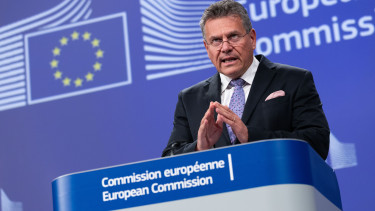Black Friday competition rules are in effect all year
Compliance and competition enforcement in sales and promotions: Where does Black Friday guide us?
The Hungarian Competition Authority ("HCA" or “GVH” in Hungarian) is one of the few competition enforcers in Europe with a prominent consumer protection enforcement practice. While consumer protection is not solely within the purview of the HCA in Hungary, the legal framework gives it relative freedom to pull any significant unfair practice that could affect competition under its jurisdiction. The HCA does not shy away from wielding its powers. In fact, some of the leading consumer protection fines in the EU are attributable to it.
For example, just this summer the authority imposed a fine of close to EUR 2.4m on Alza, one of the largest online marketplaces in CEE. According to the HCA, Alza failed to meet the promises made to consumers during its Black Friday campaign. Shortly before the Alza decision, the HCA imposed a fine of close to EUR 7m on booking.com for aggressive and misleading commercial practices against consumers.
Past cases show that the HCA's ever-increasing activity and the growing fines stem from conscious strategy decisions. In 2017, a misleading promotional campaign resulted only in a negligible fine of EUR 55,000 for Extreme Digital (another large online retailer), a sanction which is dwarfed by the fines imposed in 2020.
There is good news too. With the increased enforcement efforts, there is a growing decisional practice to guide companies. The HCA's holiday-sales practice has tremendous potential to aid companies aiming to hold large-scale sales but at the same time avoid large-scale fines.
Below, we distil the HCA's recent practice into clear guidelines in order to assist with any sales or promotional campaigns.
Why are sales and promotions important for the HCA?
The HCA's main goal is to ensure consumer welfare. This includes the protection of the consumer's decision-making process. Statements made during or prior to sales and promotions may interfere with the consumer's ability to properly consider their options and purchasing decisions, especially prior to the holidays when consumers may have already decided to make a larger purchase. Consumers may also be more sensitive if they are under pressure (seasonal or inflicted by the company itself through its messaging).
Several factors might alert the HCA's team. Below we take a look at these factors one-by-one.
Communication: how to inform about prices and conditions?
The legal:
Promotions and sales are organised around opportunities for consumers to save money on their purchases. The information about prices and the eligibility of a consumer purchase for the saving qualifies as "material information". This qualification gains relevance through the HCA's practice. Misleading communication regarding material information is capable of distorting consumer decisions which, in turn, is considered a breach of the law.
To ensure that all material information is conveyed fully to the consumer, it is important to understand how the HCA views the consumer's perspective. According to the HCA, there is an information asymmetry between the company and the consumer. The consumer does not have a full overview of the pricing and the conditions applied by the company. The company cannot expect the consumer to exert significant efforts to balance this asymmetry; rather, it is the function of the company's communication to provide the consumer with comprehensive information.
The practical:
All campaigns must be designed with this information asymmetry in mind. According to the HCA and the courts, it is unlikely that a consumer would put any effort into reviewing the underlying conditions that put headline statements of promotions in context, even if the conditions are available (e.g. online). By their nature, promotional campaigns carry statements that consumers understand as full and exhaustive information, which is designed to compensate for this information asymmetry. The responsibility stemming from this asymmetry lies with the company and cannot be transferred to the consumers.
Therefore, the communication of a promotional campaign must be:
Clear and precise. It should not require additional research or review from the consumer to understand the information regarding the prices and the conditions of the promotion. The products involved, the limits of the discount, and the exceptions must be easily accessible (e.g. on the promotional pamphlet or in the e-mail about the promotion). Consumers cannot be expected to search for the terms and conditions or to interpret separate communications together. For example, if the promotion conveys the message that "all products are on sale" the consumer cannot be expected to look for constraints behind the communication. This applies even if the communication refers to "more information" elsewhere.
The HCA has also noted that the fine print does not nullify a misleading headline, if the headline can distort the consumer's decision-making.
Raising the hype: can it distort decision-making?
The legal:
The HCA regards the consumer's transactional decision as a process involving several distinct steps. The first phase – attracting the consumer's attention – provides several opportunities for unlawful (unfair) practices to distort the process, especially when consumers already intend to spend a significant amount of money (e.g. before the holidays). Therefore, advertisements or other materials which might attract consumers must also adhere to the rules of clarity and precision.
The practical:
Infringements related to this phase of the consumer's decision-making typically manifest themselves in the following forms:
- the communicated benefits are hardly available for the consumers (e.g. the "up to 50 % off days" at a major bike retailer features only children's bikes at half price, but all adult bikes and brands are kept close to full price);
- the communication features products in a misleading manner (e.g. the "two for one" promotion communicated with pictures of expensive designer clothes at a fashion retailer involves only cheap accessories which the retailer distributes with each purchase);
- the communication features appealing products as a hook (e.g. the "crazy sales" banner depicts expensive smartphones from the latest generation, while the sales apply only to cheaper, older or less popular products).
In these cases, the communication aiming to attract consumers qualifies as an infringement of the law at the moment of publication. It follows that delayed communication of conditions do not negate the infringement. If the conditions are clarified upon entrance into the retail store or even if the communication is extended and clarified a few days before the sale, it is unlikely to convince the HCA that no infringement has taken place.
"Up to" statements: how to avoid up to 10% annual turnover in the HCA fine?
The legal:
An "up to" statement is a statement where the company communicates the available discounts by referring to the maximum discount achievable by consumers during the sales, e.g. "up to 50 % off". The HCA and the courts have attached several conditions to such statements. The "up to" statement cannot function as an escape from clear and precise communication on discounts. A promotion may infringe the law even if the discount is attainable, but only for atypical products which are relevant for only a small fraction of consumers. The HCA and the courts specifically confirmed that the consumer does not (i) assume that the discount is available only in a very small number of cases, and that (ii) popular and high-priced products cannot be subject to such high discounts.
"Up to" statements are lawful if the following conditions are met:
- the maximum discount is applicable to typical products of the company;
- the maximum discount is attainable in at least 10 % of the entire portfolio of products involved in the promotion.
When assessing whether the products included in the promotion are typical, the products included in the communication must also be considered. If the promotion or sale clearly applies to a separate range of products, the products concerned must qualify as typical within this product range.
The 10 % minimum for the products where the maximum discount is attainable represents a threshold where, according to the HCA, "a non-negligible group of consumers" could "potentially and realistically" attain the advertised maximum discount.
The practical:
The above two steps represent a technical framework which companies must consider on a case-by-case basis. Nevertheless, the HCA's practice helps to understand the precise requirements:
- In the case of a tech retailer, it is unlawful if the maximum discount is only attainable for photo frames or phone cases, especially if the retailer attracted consumers with pictures of high-value phones and cameras in its communication. The frames and cases are atypical products.
- If the company is an online retailer with a broad general product offering, it is the sales of the company and the products featured in the communication which determine which products are typical. A football or a lamp bulb are marginal products that are purchased seldomly and by very few people, therefore these are atypical even in the case of a general offering. The same football will be a typical product, however, if the company offering the promotion sells sports accessories or if an online retailer with a general offering holds a campaign called "football days" during the football World Cup and communicates this with pictures of various sports accessories on sale.
Importantly, the HCA clarified that regardless of the above test, it will continue to investigate any behaviour which might deprive consumers of benefits based on reasonable expectations.
Comparing prices: which prices can be compared?
The legal:
Comparing original prices to sales prices is a straightforward promotional tool. The HCA's expectations in this regard are similarly straightforward: it is unlawful if the sales price is not applied in reality or if the original price was never in fact the price of the product. The original price must be a price which was applied directly prior to the sale by the company in a manner which is "regular". Prices applied in a temporary manner for a short period of time cannot constitute an original price.
It is important to note that even if no original price is indicated, it is unlawful for a company to indicate a price as a "discount" offer if that price does not meet the above criteria.
The practical:
The HCA has made it clear that Hungarian consumers are highly price sensitive. Therefore, any unfair practices revolving around prices may result in an investigation due to the authority's heightened vigilance and the cascade of complaints which are likely to land on the official's desks.
The original price is necessarily the price applied prior to the promotion or sale, even if this was already a discounted price due to the age of the product, for example. The company cannot indicate the recommended price or the original price as applied during the launch of the product as the original price if the price was not applied directly prior to the sale or promotion as a regular price. In turn, it also qualifies as an infringement if the company temporarily raises the price of the products prior to the sale in order to indicate that price as the original price.
Ending unlawful promotions: the HCA's vision
The HCA has published a press release together with its Alza decision expressing hope that unlawful Black Friday campaigns will cease as a result of the staggering EUR 2.4m fine and the decisions of the last few years. The above is a distilled version of the HCA's practical guidance provided in these cases. Most of the relevant case law relates to sales prior to the Christmas holidays, which the HCA regards as a more sensitive period. Nevertheless, to ensure compliance, it is reasonable to adhere to these rules.
The above guidelines may be summarised in the following cornerstones:
- Communication – consumers cannot be expected to review and investigate the conditions behind the main messages of a communication, even if the fine print suggests it would be necessary.
- "Up to" statements – the HCA established a two-step test to ensure that the promotion or sale applies to typical products and a 10 % minimum threshold is met.
- Raising attention – distortion of the first step of the consumer's decision-making process (misleading statement, products serving as hooks) might easily result in an infringement.
- Price comparison – only regular prices which were applied prior to the sale or promotion may be regarded as original prices.
Even if a sale or promotion meets the above criteria, an overall review is necessary to ensure that the commercial practice also meets the general requirement of professional diligence. Nevertheless, once the above boxes are ticked, a promotional or sales campaign should satisfy the main concerns raised by the HCA in the last few years.










